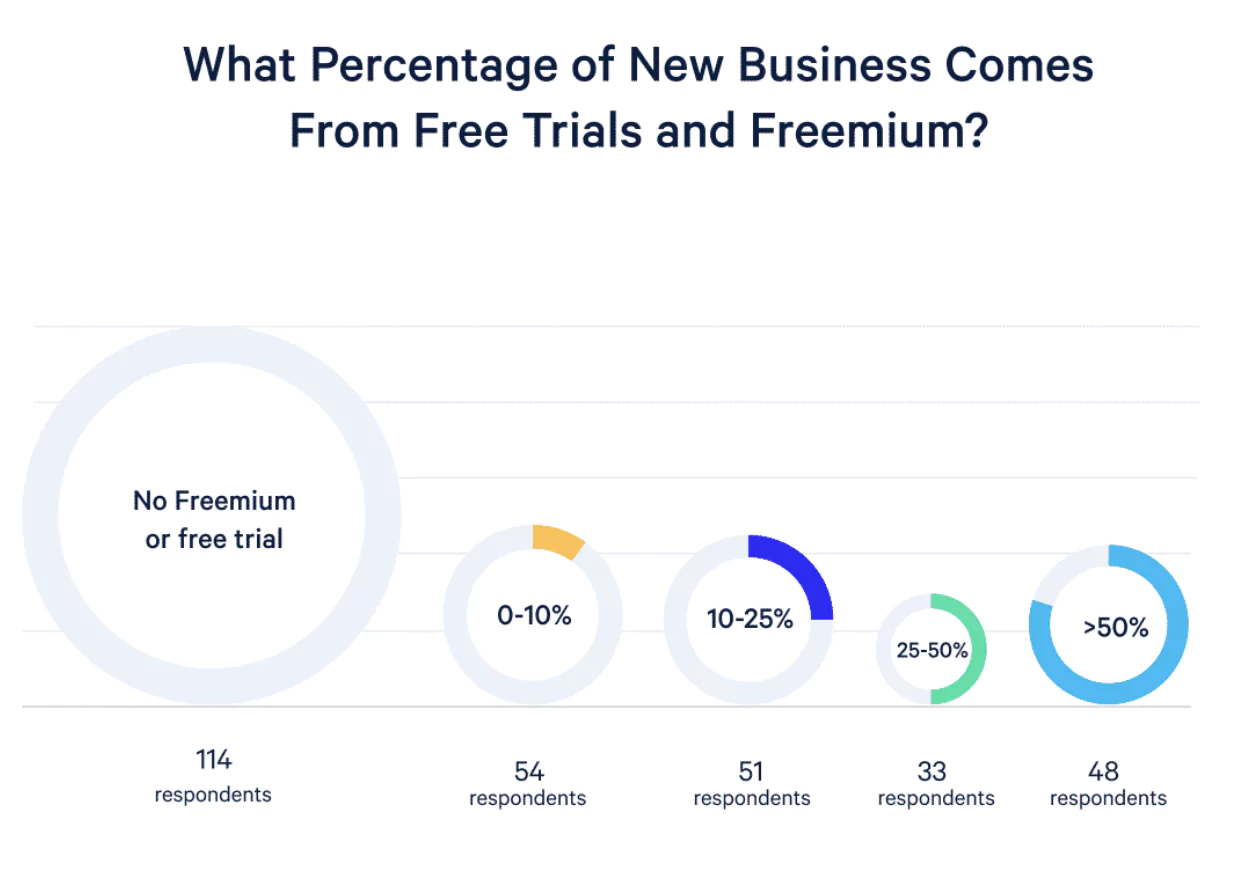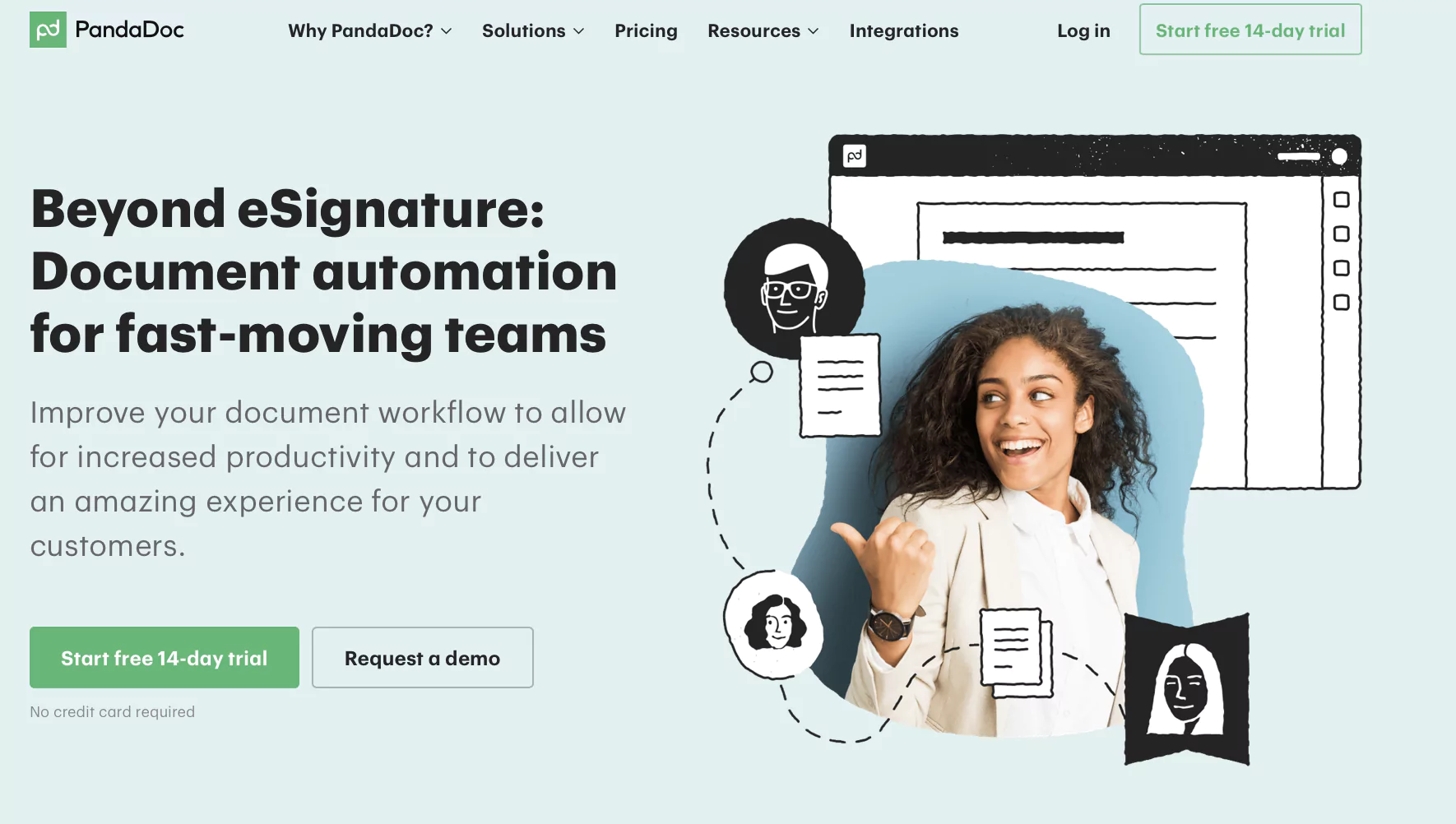12 Best Lead Generation Techniques for Small Businesses
December 20, 2021 12 min read

A steady stream of leads is vital for any small business. It allows you to grow your email list, customer base, and increase revenue year over year. But without a lead generation strategy, you’ll lose valuable market share to those that have refined this process.
The good news is there is more potential than ever to reach your audience. If you’re wondering what strategies work to generate more leads, you’re in the right place. We’re going to cover some of the best lead generation techniques that you can implement today to attract more prospects.
What is Lead Generation?
A lead is anyone who has expressed interest in your company’s products or services. With the right nurturing, these individuals will eventually become paying customers.
Lead generation is the process of attracting prospects through various marketing channels. The goal is to generate interest in your products or services. It’s a vital practice because it supports business growth. It allows you to maintain a healthy pipeline that you can nurture to bring in sales and increase revenues.
An effective lead generation process is also an important part of the overall value chain’s (activities that organizations perform to increase efficiency) success. If one channel continues to deliver mediocre results, it doesn’t make sense to keep pouring money into it, does it?
Many businesses make the mistake of marketing to anyone they can. What ends up happening is they collect leads that aren’t a good fit for their products or services. Their sales team wastes time trying to convert people that have no interest when they could have used that time to find and engage with more qualified leads. An ineffective lead generation approach is a waste of time, money, and can totally disrupt your sales process.
However, once you identify the channels that deliver the best results for your business, you can continue reinvesting in them and eventually see more return over time.
Now, let’s dive into the strategies that you can rely on to generate leads for your business.
1. Implement an SEO Strategy
Consumers today are starting their product research through search engines. More than half of all shoppers have used Google to discover or find a new brand.
Search engines are the most important channel for generating leads. If your site isn’t ranking for target keywords, your audience will land on competing pages instead.
So, how do you increase your visibility in search results?
Well, you could hire an SEO agency, or you could do it yourself by implementing an SEO strategy.
Identify keywords that your audience would search for to find your products or services. Use free tools like Google’s Keyword Planner, a free keyword research tool from Google, to help you uncover even more keywords to target.
Be sure to include your keywords in the following areas of your site:
- Title tags
- Header tags
- Meta descriptions
- Image ALT tags
- URLs
Optimize the content itself to improve your visibility for certain keywords. But don’t go overboard here — the last thing you want to do is spam your pages with keywords or create content that sounds robotic. Work your keywords in naturally.
Be sure also to claim your Google My Business listing to improve your local rankings. This allows you to manage how your business appears on Google Search and Maps.
Increasing your rankings isn’t something that happens overnight. In fact, it can easily take weeks or even months to rank for your keywords, depending on how competitive they are. You can use tools like Semrush to help you make a better analysis of your keywords.
But once you improve your visibility in the search results, you’ll be able to attract more quality leads for your small business.
1. Utilize an Email Marketing Strategy
The beauty of email marketing is that it’s a powerful, flexible and measurable marketing channel. It’s a conversion-rich strategy that enables brands to reach new customers and grow revenue on a minimal budget.
To generate email leads, you have to first identify your ideal clients and understand their pain points. Then, tailor an offer that solves those problems and create a landing page to direct leads to, and make sure it includes an opt-in form.
Lastly, take the offer where your potential customers are. This could mean promoting the offer on social media and running some paid ads. The idea is to gently nudge potential customers to agree to share their contact information with you, like their names, email addresses and any other tidbits you may need to help you qualify your leads and get to know them better.
Once you get a few leads, the process doesn’t end there. Give them a reason not to resist the service or product you offer. Send them personalized yet valuable content to reel them in and turn them into customers. Email marketing software can help you create customized emails and perform A/B testing to tweak the strategy where necessary.
2. Join Social Media Groups and Communities
When you find a social media group and community that aligns with your industry, you’re able to directly tap into potential customers. For example, a CRM group on Facebook is probably made up of people who use CRM software, like sales professionals, marketing teams, and customer support representatives. If you’re in the business of creating CRMs, or if your company targets these individuals, it makes sense to join this group.
All you have to do is dive in and establish real connections with these people. Share the content you create that you think will be helpful. Even try sharing some special promos or offers you have, as well as a link to join your email list. But remember, these communities and groups have unique rules of engagement, so make sure you respect them.
As you engage in these groups, if you don’t adhere to the stipulated guidelines the moderators will flag you, delete your content or kick you out of the group altogether. Hrishikesh Pardeshi recommends a contribute first, market later rule, where you ask and answer questions 90 percent of the time and share links to your products ten percent of the time.
3. Build Your Community
Online communities are a good source of high-potential leads. A study by The University of Michigan found that customers spend 19% more when they become a member of a brand’s online community.
If you create a branded community or a public social network, the principal aim is to pull together a group of staunch followers who care about your brand and want to engage further with it. It doesn’t necessarily mean it has to consist of people who use your product or services, but those who trust you and look up to you as an authority in your niche.
This way, when you post an offer in the channel, you’ll have some people taking it up while others will act as supporters, sharing it with friends and associates who may not be part of the community.
4. Optimize Your Website
Picture this: you’re driving through the streets and notice a newly opened grocery store with this uniquely-branded facade. If you were in town for grocery shopping, would you be interested to see “what’s inside”? Most probably, yes.
Similarly, an optimized website grabs the visitor’s attention and can quickly turn them into customers. While there are many factors to consider when optimizing your website, here are the most critical:
- Page load time. The probability of potential customers leaving your website increases 32% as page load times increase from one to three seconds.
- Web design. Leads nowadays won’t leave contact information on a website that looks like it’s straight out of the ’90s.
- Mobile-optimized. More than 60% of your leads do their web searches through a mobile device.
5. Incorporate Backlinks
The number of high-quality websites that link back to your website is a significant factor in how your website ranks. If you want your website to rank high on Google SERPs, this is one of the things you have to consider. The higher your website ranks, the higher the number of web visitors (hence leads) your brand gets.
To get high-quality backlinks, reach out to sites that have high domain ranks and authority scores (use tools like SEMRush or Moz to tap into these numbers). Share with them your pillar content and identify areas that they could potentially link to it. It’s best to stick with blog posts that cover similar topics and include keywords that pertain to your pillar posts. Make sure the content makes sense and that you aren’t asking them to link back to anything too promotional, like landing pages, pricing pages, or homepages.
6. Add Paid Ads
You can also use outbound strategies like paid ads to generate leads. Paid ads can take many forms, including:
- Search ads
- Retargeting ads
- Social media ads
- Display ads
Just make sure that your ads have some sort of promo or offer that leads visitors to a landing page where they can sign up for that offer as well as your email list.
7. Boost Your Content Marketing Efforts
Many small businesses rely on paid channels like Google Ads to generate leads.
While outbound strategies are still effective, they tend to be more invasive. You’re “pushing” a message to your audience. In contrast, inbound marketing “pulls” customers to your business by helping to solve their problems.
Content marketing is a kind of inbound marketing strategy that involves creating quality content
that’s relevant to your audience.
Types of content you can create to generate more leads include:
- Blog posts
- Ebooks
- Videos
- Infographics
- Resources
- Slideshows
- Webinars
Just how effective is content marketing?
Extremely.
Data from the Content Marketing Institute found that 75% of B2B marketers successfully used content marketing in the past year to generate leads.
Publishing content doesn’t just help you generate leads. By providing quality content, your audience is more likely to see you as an industry expert and trust your recommendations.
Another added benefit is that each piece of content you publish boosts your search engine optimization efforts. That means more traffic and more leads.
To get started, identify questions or problems that your audience is experiencing. Use forums and other platforms to help you with this process.
Create and publish in-depth pieces of content to your site pertaining to those issues you’ve looked up. Always focus on providing value, and be sure to optimize your content to improve its rankings.
You can also use this strategy to create lead magnets — anything you give away in exchange for contact information. You can gate your lead magnets with a website form that requests people’s information in exchange for the piece of content.
Here’s an example of how Nlyte offers a free ebook on DCIM software to generate leads:

Visitors can download the free ebook by simply filling out a form. Using lead magnets is a great way to grow your email list, which you can nurture through an email drip campaign. It’s a win-win situation.
8. Create Guest Content
Guest posting can be part of your link-building strategy, but it too is a great way to generate leads for your business.
Let’s say you run an SEO consultancy business, for example. You could reach out to SEO blogs with a huge readership, such as Search Engine Journal, to see if they accept content from guest contributors. As you create your guest post, be sure to demonstrate your expertise and add a link back to your brand’s website. This way, the guest post will allow you to tap into Search Engine Journal’s highly-engaged audience (that aligns with your customer base) and send them to your website.
9. Offer Free Trials
Companies like Apple and Amazon have spent decades building their reputations. As a result, consumers don’t hesitate to spend billions of dollars each year with them. They know exactly what to expect.
But as a small business, you don’t have that same luxury. New visitors to your site likely have reservations, and for a good reason — they’ve never shopped from you before. One way to overcome hesitation and generate more leads is to offer a free trial.
According to one SaaS report, 16% of SaaS companies generated more than half of new business from free trials and freemium offerings.

Free trials are clearly effective. They give potential customers an opportunity to experience your products or services. It’s like those test drives that car dealerships frequently offer to turn shoppers into proud car owners.
If you aren’t already, consider offering a free trial for your product or service. Be sure to make that offer clearly visible on your website.
For example, PandaDoc offers a 14-day free trial of its document signing software and makes that clear on its homepage.

Anyone who signs up for a free trial also enters your marketing funnel. That means you can continue to nurture those leads until they become a customer.
Of course, free trials don’t necessarily work for every business. That’s why it’s a good idea to experiment with different offers and decide for yourself whether to keep them.
10. Get Customer Reviews on Review Sites
Think about the last purchase you made. If it’s a new purchase (something you never bought before), chances are you didn’t purchase right away. You likely conducted extensive research before finally making a decision.
Reviews increasingly have a growing impact on purchasing decisions.
73% of B2B marketers rely on multiple sources to evaluate purchases. They’re turning to peers, industry experts, and even review sites. Let’s look at the last one in more detail.
Sites like G2 and Trustpilot allow users to submit reviews on software products. Others can read those reviews to evaluate a product and determine whether it fits their needs.
A strong presence on popular review sites for your industry can work wonders for lead generation. This credit repair companies’ review aims to promote multiple companies and generate leads by being featured on Simple Money Lyfe. Anyone searching for reviews about credit repair companies can read through this review to learn more.
Of course, this strategy works even better when you can get favorable reviews. Too many negative reviews can have prospects second-guessing their decision. Don’t hesitate to seek out reviews from your customers. Most will be more than happy to provide a review, especially those that have been with you for a while.
11. Create Targeted Landing Pages
If your site isn’t generating leads, the culprit is likely your landing pages — pages that visitors “land on” after clicking an ad.
If your landing pages are poorly designed or fail to communicate your products’ value, your conversions will be abysmal.
Too many companies make the mistake of sending traffic to a homepage. This is generally a bad idea because homepages aren’t optimized for conversions. They act as hubs that direct visitors to other parts of a site.
Even if you have little design or technical experience, you can use a landing page builder to create optimized landing pages for your products or services. These pages will allow you to capture more leads that your sales team can work on nurturing.
Conclusion
Generating leads is the key to growing any business. Implement the lead generation techniques as outlined above, but be sure to keep a close eye on your analytics. This will help you identify what works and what doesn’t.
As you start seeing results, consider implementing business process automation software to automate parts of the lead generation process. This will allow your sales team to spend less time on repetitive tasks and more time on higher-value work like qualifying leads.
AUTHOR BIO

Ray Hein is the CEO and founder of Propel PLM, a cloud-based product success platform. He is a SaaS veteran with 20+ years of PLM, development and product launch experience in both hardware and enterprise software organizations. Ray has held multiple executive positions at companies such as Agile Software, Apttus, Vendavo and Centric Software.



